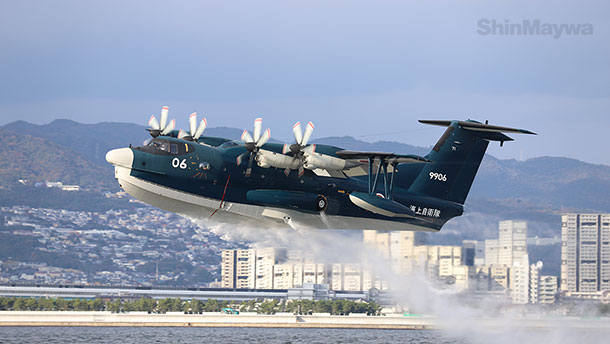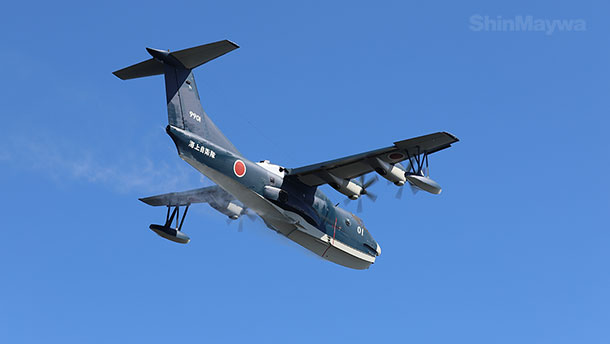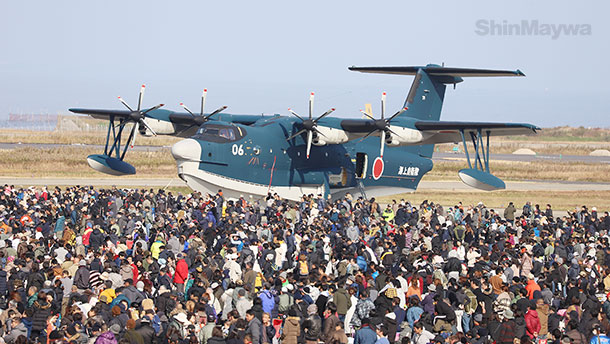[Series] How the US-2 is made (7)
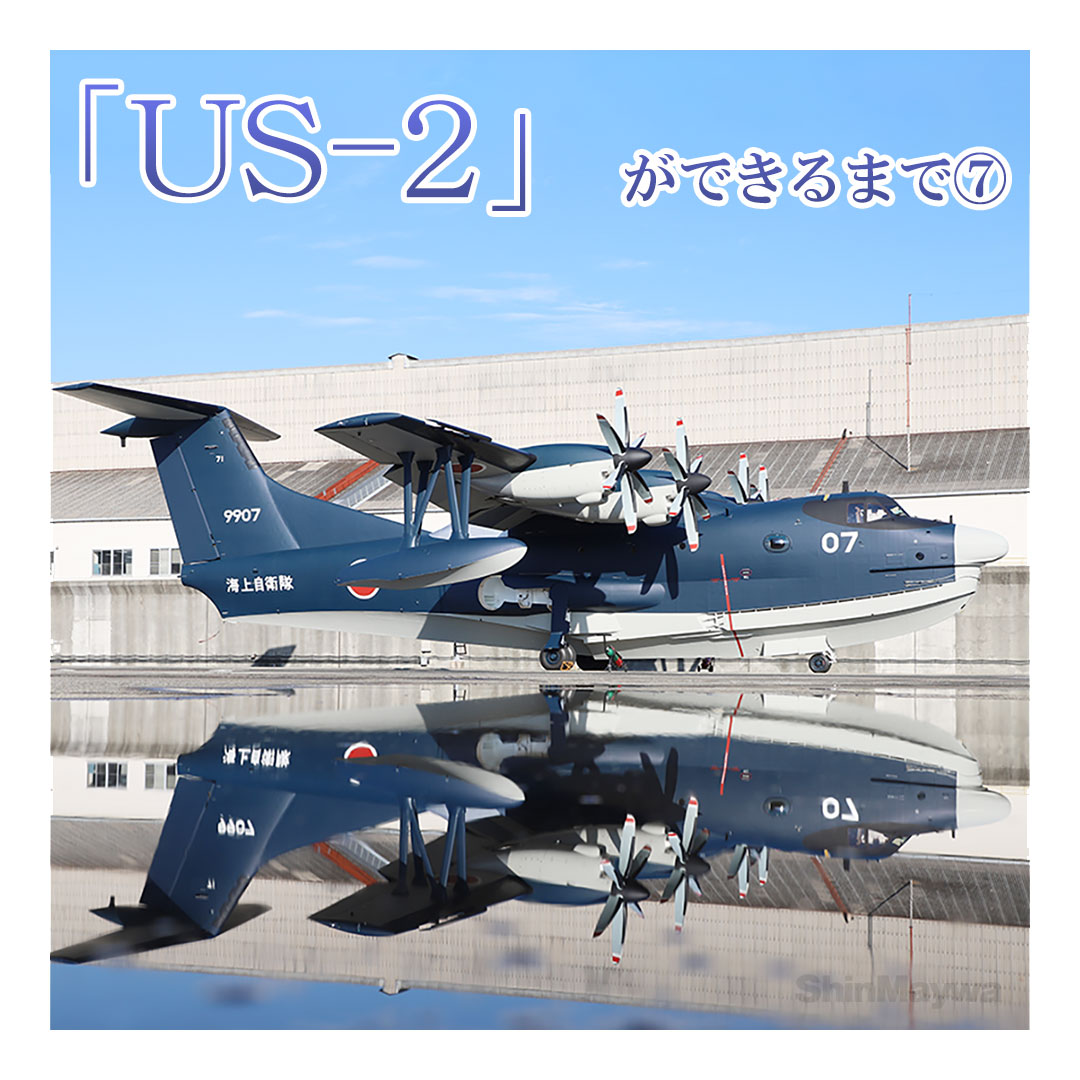
Close coverage by a professional writer
The highlight of the first half was jig unloading and this is the halfway point in airframe manufacturing!
Previously, the first half of the modular design process was introduced. In that phase, the parts of the airframe are built simultaneously and assembled all at once at the end. This issue introduces the second half of this process. The individually assembled parts of the US-2 are detached from their respective jigs and transferred to a large jig for assembly of the entire airframe (hull), and then joined together.
As is commonplace in the manufacturing process of "US-2", large parts are joined together with no more than a hair's width of space between them. As has been mentioned many times in this series, it demonstrates the extremely precise work accomplished up to this point. After all parts are joined, it is time to unload the jig. Generally speaking, this is the halfway point in aircraft manufacturing. In the case of a shipbuilding this is the timing when the parts of the hull are made in simultaneously, joined at the dock (a facility to build and repair ships), and the ship's shape is revealed for the first time. It is indeed a milestone.
As the name suggests, jig unloading refers to the detaching of the airframe from the jig in which it has been assembled. Although it is called jig unloading, the airframe is actually lifted up. The airframe cannot be lifted straight up if the center of gravity is off. Therefore, it is lifted a few millimeters at a time, and if the center is slightly off even by a bit, a weight is placed on the lighter side to maintain balance. This is done carefully and delicately. It is not unusual for the lifting to take several hours to complete, even though the distance is only a few meters.
When lifted into the air, the entire fuselage of the large US-2 can be seen for the first time. The craftsmen at the Konan Plant, who have been carrying out this delicate work ever since the start of manufacturing, feel a sense of accomplishment when they see it so large. But the scenes that require technical skills will continue in the future.
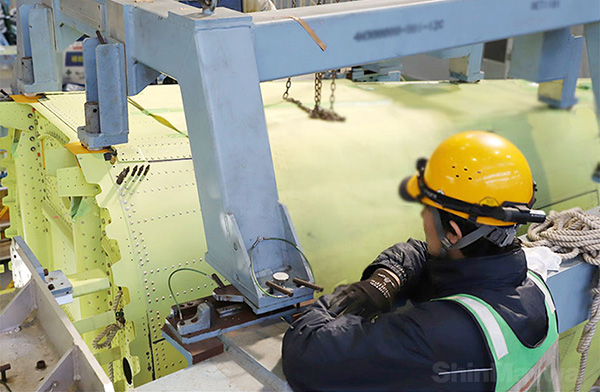 (1) This is the stern part. The entire top of the jig is connected to a crane in preparation for lifting.
(1) This is the stern part. The entire top of the jig is connected to a crane in preparation for lifting.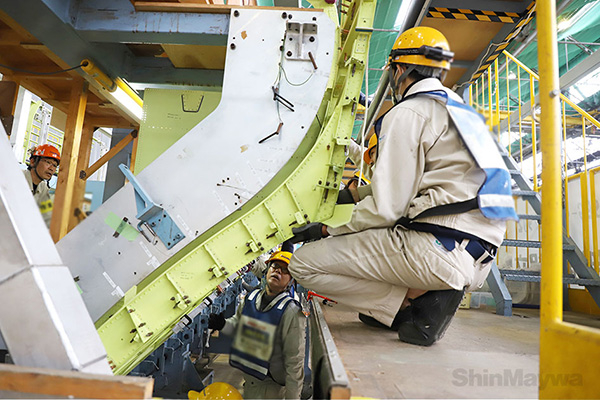 (2) Here a part of the bottom of the airframe is being lifted up and detached from the jig. To avoid damage to the jig and scaffolding, the crane is moved a few centimeters at a time and stopped, and the work proceeds slowly and carefully.
(2) Here a part of the bottom of the airframe is being lifted up and detached from the jig. To avoid damage to the jig and scaffolding, the crane is moved a few centimeters at a time and stopped, and the work proceeds slowly and carefully.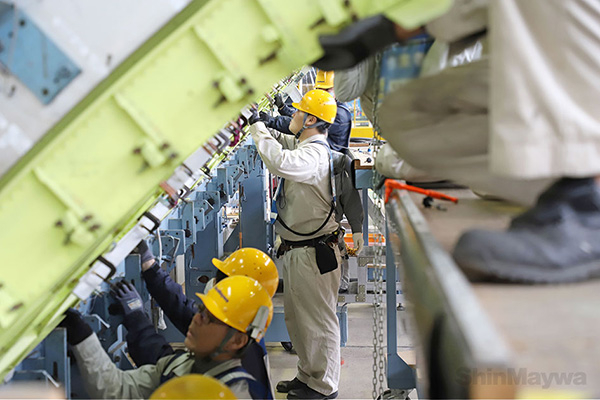 (3) When removing a large block, a large number of people keep eyes on every nook and cranny, calling out to each other and working in unison.
(3) When removing a large block, a large number of people keep eyes on every nook and cranny, calling out to each other and working in unison.
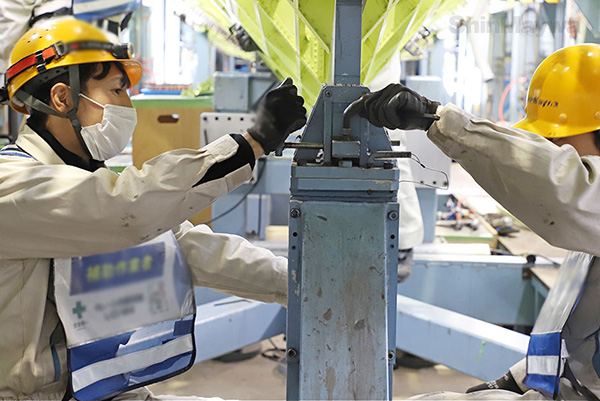 (4) The lifted bottom is lowered onto the jig to join the airframe. Once positioned, it is firmly secured in place.
(4) The lifted bottom is lowered onto the jig to join the airframe. Once positioned, it is firmly secured in place.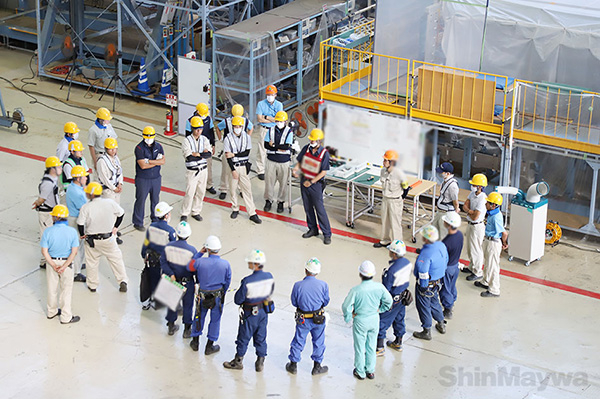 (5) A meeting before the jig unloading process, in which the entire joined airframe is lifted up and detached from the jig. Crane operators from a subcontracting company also participate in this process.
(5) A meeting before the jig unloading process, in which the entire joined airframe is lifted up and detached from the jig. Crane operators from a subcontracting company also participate in this process.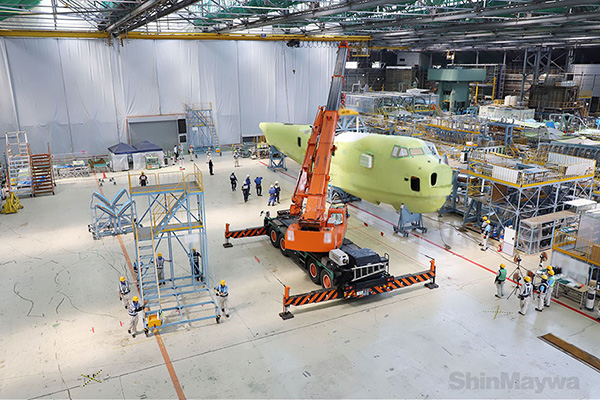 (6) This is the jig unloading process, which is the halfway point in airframe manufacturing. A crane is used to pull up the airframe from the scaffolding on the right side of the photo and lower it onto the pedestal on the left side. Although the fuselage is large, it is mostly a hollow casing made of aluminum and therefore quite light.
(6) This is the jig unloading process, which is the halfway point in airframe manufacturing. A crane is used to pull up the airframe from the scaffolding on the right side of the photo and lower it onto the pedestal on the left side. Although the fuselage is large, it is mostly a hollow casing made of aluminum and therefore quite light.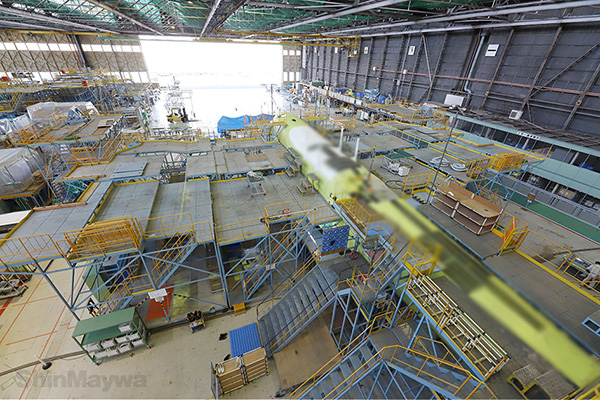 (7) Scaffolding has been erected and it completely covers the airframe. Broadly speaking, this completes the construction of the airframe. The following phase is outfitting, where engines and other equipment are installed inside and outside the airframe.
(7) Scaffolding has been erected and it completely covers the airframe. Broadly speaking, this completes the construction of the airframe. The following phase is outfitting, where engines and other equipment are installed inside and outside the airframe.
Writer Hidenori Itakura
- *This series is produced and published with the permission of the Ministry of Defense. Please do not reproduce the content and images of this series.




